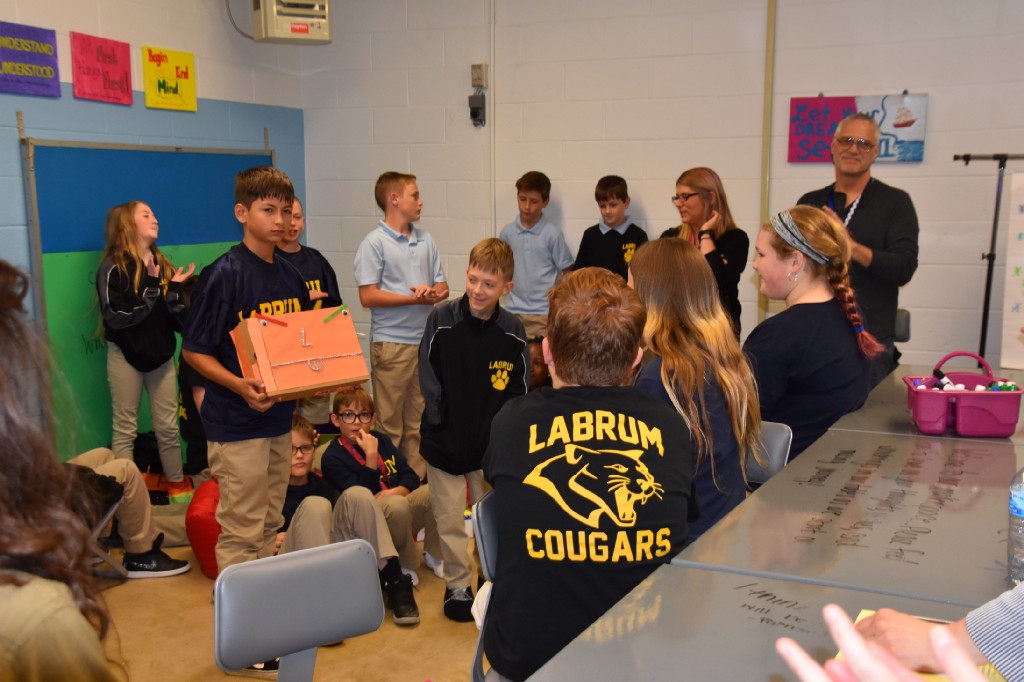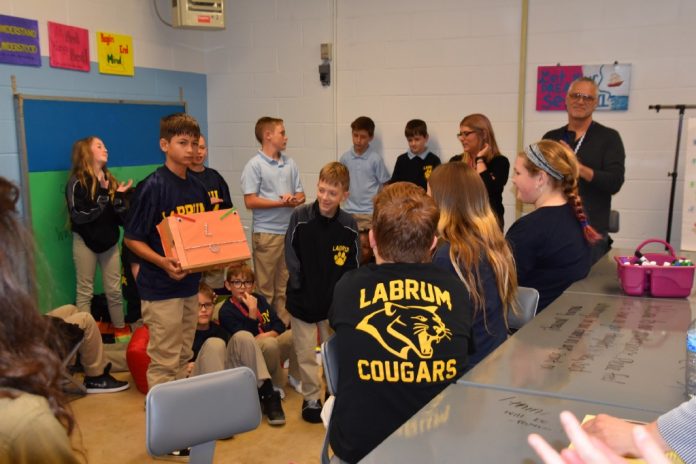From concerns of closing to the addition of the MakerSpace, LaBrum Middle School has become a public school on the rise.

Just five years ago, Gen. J. Harry LaBrum Middle School had 163 students enrolled and the faculty had legitimate concerns it was on the verge of closing. The school did not exactly have the best reputation in the community, which led to only 40 percent of the student body at LaBrum coming from John Hancock Elementary School in the neighborhood.
Principal William Griffin recognized a multitude of issues at the school when he took over, starting with the way the school was run.
“It was an adult-centered school,” Griffin said. “What I mean by that is it really focused on the needs of the adults and not the needs of the children.”
With the low enrollment and lack of student engagement, Griffin realized that LaBrum, at 10800 Hawley Road, needed some serious changes if it wanted to adapt to the needs of the students in the community.
From 2012 to 2015, LaBrum gained 87 students, added art, music, drama and robotics clubs and formed ballroom dancing, football, soccer, track, basketball and field hockey teams. In just that three-year span, LaBrum also went from having 40 percent of its students from Hancock to 90 percent of its student body.
Assistant principal Andrea Miller, who has spent 38 years in education, came to LaBrum in 2010. Miller acknowledges the differences in culture by adding various after-school programs and sports for the children.
“There was no motivation to be here,” said Miller. “Then we brought sport teams and other activities…we made it about the kids.”
Griffin and the administration were pleased to see significant progress within that three-year span, but recognized there was still room to grow.
Griffin saw test scores improve, but stated, “We really need to get the kids ready for the 21st century.”
In hopes to continue to separate and modernize LaBrum from other public schools, they have now added a MakerSpace.
Defined in the slideshow that Griffin showed various teachers and members of the community, “A MakerSpace is not solely a science lab, woodshop, computer lab or art room, but it may contain elements found in all of these familiar places. It must be designed to accommodate a wide range of activities, tools and materials.” The slideshow added that cardboard construction, prototyping, woodworking, electronics, robotics, digital fabrication, building kinetic machines, textiles and sewing are possible activities that a MakerSpace can include.
The addition of MakerSpaces in schools across the country is evident, but the process is still time consuming nonetheless.
“This is a unique space that has taken us two years of planning and designing to actually bring into fruition,” said assistant principal Stephanie Hannan. “This is the first year our students were actually able to use the MakerSpace.”
Hannan, who is in her third year at LaBrum, explained her excitement and the uniqueness of this specific space.
“This allows students to demonstrate their learning in a totally different way and it cuts across all content areas,” she said. “I think one of the neatest things we’ve seen our students take away from it is that working in a MakerSpace isn’t about doing arts and crafts, it’s about really using the design process to think through problems and come up with solutions.”
One might ask, how does a school like LaBrum, which has seen a significant increase in enrollment in the past couple of years, find the room for a learning area such as this? Those at the school have a knack for being creative, so they decided to use a room that was an unoccupied boys locker room that has been empty since 1987 for this MakerSpace.
“All of our classrooms are full at this particular point, so we came in here and we were like, ‘We can do this, we can create from here,’ ” said Griffin.
Griffin continued to explain what he thinks makes a MakerSpace beneficial for today’s educators and students.
“Our schools have been established to get factory workers ready and we need to move away from that,” Griffin explained. “We need to get kids ready for the technology that’s out there today, and also the technology that hasn’t been invented yet.”
Miller added another reason why a MakerSpace is a particularly good fit for LaBrum.
“Since we have such a big special education population, we needed other ways for kids to be able to show how they know something,” Miller said. “So we thought this was a perfect way to do that.”
After Griffin’s presentation was completed, parents and other members of the community were able to see the MakerSpace for themselves.
Dean of Students Stefanie Londo had the students show off their first creations in the MakerSpace: shoes.
The students were proud to show off their shoes, but Londo recognized this was only the beginning of what students would accomplish in this space.
“The first thing we tackled are the shoes, but there’s no limit for what can be made in a MakerSpace, that’s the beauty of it,” said Londo.
Now in 2017, LaBrum has 270 students enrolled and there is a growing waiting list.
Much like Londo’s comments about the MakerSpace, there is a sense that there is no limit to what they can accomplish at LaBrum now. The MakerSpace was made possible by grants and donations from a wide variety of local unions, politicians and educators. ••





